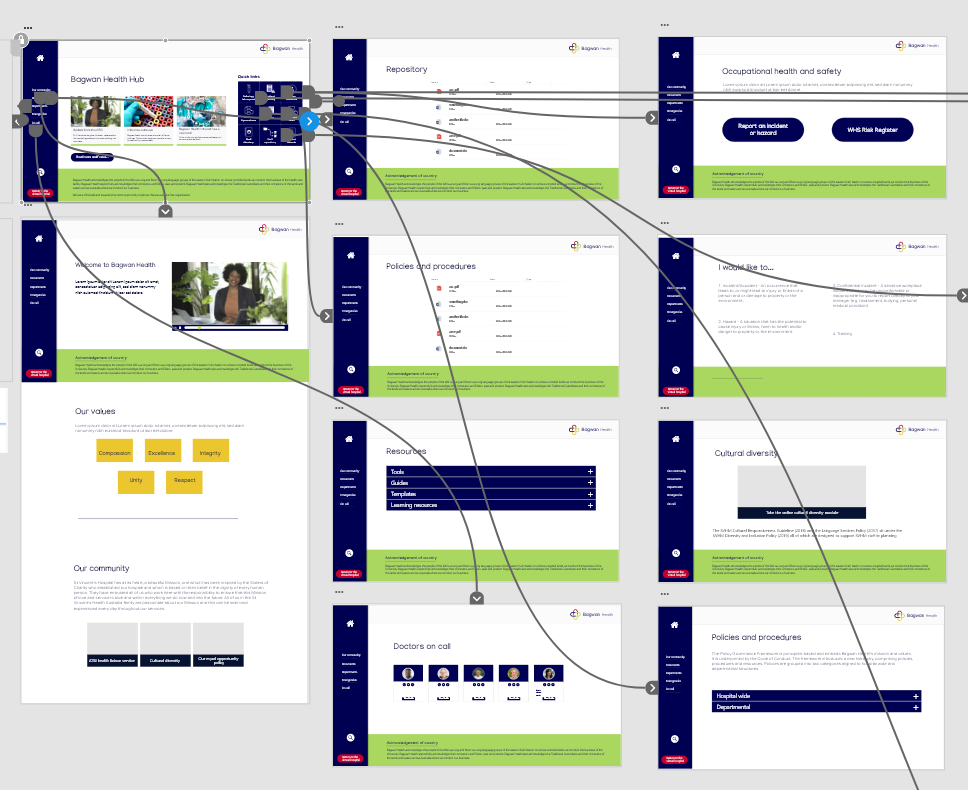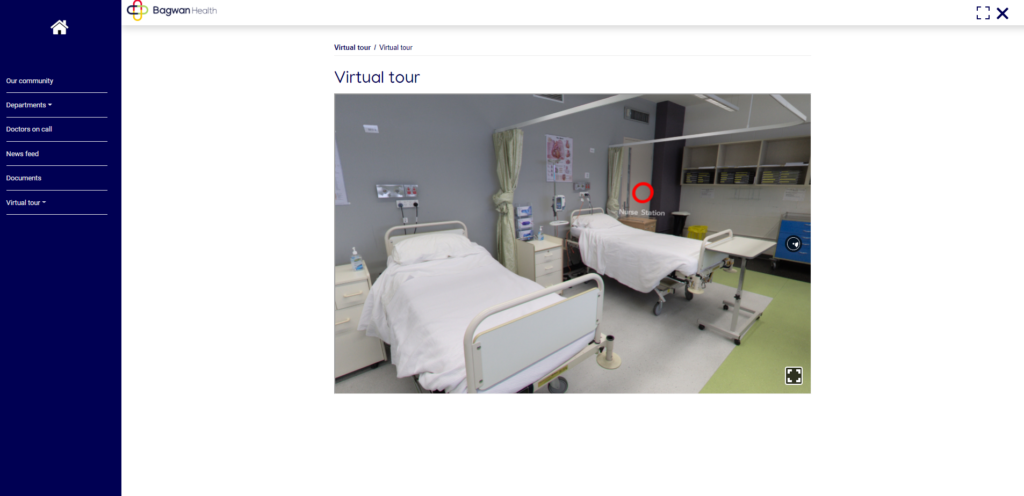We built a hospital!
Well sort of. We built a simulation of a fictional hospital called Bagwan Health. Bagwan is a Woiwurrung/Boonwurrung word which means ‘life’. The virtual hospital consists of a realistic staff intranet and a virtual tour of the hospital.
How did it get started?
Simulation of a workplace environment is often required for workplace training and assessment. Many courses create scenarios to simulate workplace environments, but they often lack the realistic connections with a workplace to meet auditing and assessment.
The Vocational Education Design Team (VEDT) had investigated some examples of virtual workplaces to meet the requirements for course content, however they were not scalable and shareable across units, schools and courses.
That is when the idea of creating a fictional health care facility came about by Elissa McKenzie and Jack Dunstan as a way to provide a broad range of services delivered by qualified staff whose competencies match with RMIT’s educational delivery model.
In April 2019 Elissa and Jack successfully pitched the project entitled The Virtual Workplace at the RMIT Education Innovation Pitch Tank. The successful pitch gained access to $50,000 to fund the project.
https://youtube.com/watch?v=PYSUQMjSzZM
How was the virtual hospital created?
A co-design approach was taken to create the virtual hospital. The planning stage began by meeting with teachers and course coordinators from CoB, SEH, DSC and VE to gain an understanding of how the virtual hospital would be used in courses and what type of content would be useful.
Next came the design stage where the structure of the content was mapped out. Rough visual prototypes were created using Adobe XD by the multimedia designers and storyboards were created by the learning designers. The prototypes and storyboards were then referred to two subject matter experts from industry to ensure that a realistic workplace and practices were being conveyed.

A key aspect of the virtual workplace was to not only make it modular but to make it so the framework could be easily replicated into other industries further down the track.
Therefore a custom tool was made in house to build the 360 degree virtual rooms. Locations around RMIT were photographed in 360 degree format to create the virtual tour of the hospital.
A website was also built to replicate the hospital intranet. The framework of the virtual hospital can easily be duplicated and re-skinned to create new environments. For example, this framework could easily be turned into a design studio, textile factory or a building/architectural firm.
What features does the virtual hospital include?
- a collection of realistic hospital policies and procedures
- a staff repository that includes more than 30 branded forms and templates that teachers and students can download to simulate real workplace scenarios
- Bagwan Health branding guidelines and branding elements that can also be downloaded and used
- a fictional organisational structure that consists of 5 departments and over 120 fictional staff members
- workplace news articles
- online forms that simulate real forms that might be required to be completed in the workplace e.g. OHS incident reporting form and a lab request form
- interactive learning tools and personal development resources which include:
- an interactive branching scenario video to help interpreters and health care workers with professional judgement a patient or client doesn’t speak English
- a PPE activity and an infectious waste sorting activity
- personal development resources on workplace safety.

The virtual hospital will only be available to RMIT staff and students. The product is intended to be modular so we will continue to grow the hospital based on the feedback we receive from the students and teachers that use it. For RMIT staff that would like to keep up to date with our progress and new features you can follow our SharePoint site or contact Nicky at vedt@rmit.edu.au.